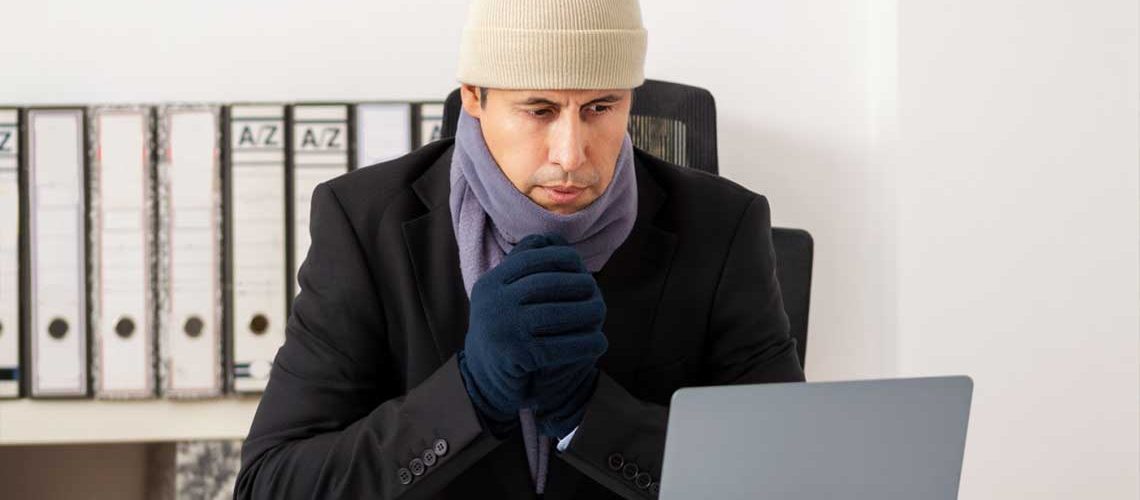With winter on the horizon, temperatures will begin to dip toward freezing. It’s a time for bundling up at the office, having hot coffee, and tackling your daily tasks as efficiently as possible. However, you notice that it has started to snow, and your fiber optic internet has started to slow down. What gives? Does the cold winter weather directly impact the quality of your fiber optic connection? Is it a crazy random happenstance?
The Science Behind Winter Weather and Fiber Optic Cables
Extreme temperatures and precision technology often don’t go well together. Those conditions can do a number on your data cabling systems on either side of the spectrum. The frigid conditions can create a noticeable drop in performance for your network systems, but what exactly is it doing to them? Is it affecting the quality of the internet connection, or is it something more?
The cold weather has a habit of proving troublesome for data cabling in Mercer County, NJ, and beyond, and whether it will impact you depends on a few factors. The good news is that the actual cold temperatures do not affect the quality of your connection. However, some frigid conditions’ byproducts can impact fiber optic cables.

Extreme Weather
Blizzards come with the territory of winters in the Northeastern United States. The temperature drops, the cold rolls in, and the snow starts falling rapidly. With so many extreme weather conditions and patterns rolling through the Northeast during this time, business owners may see the overall quality of their service dip in quality. However, while the rising snow mounds might seem intimidating, they don’t actually affect the quality of your cables.
Throughout affected areas, snowfall can have a sizable impact on your business’s ability to get work done. Power outages, wrecked roadways, and difficult driving conditions can make getting to the office a non-starter, but how does it affect your cabling system? The snow accumulation can lead to outages that can affect your ability to get work done, but it doesn’t affect the fiber optic cables themselves.
So When Do Cables Become Affected?
If it’s not the snow causing problems with your internet connection and network stability, what about the winter weather that can affect your system? It comes down to whether or not water gets into the cables. Worn-out or faulty fiber optic cables can be susceptible to water infiltration from melting snow, and that’s where potential problems can arise.
Fiber optic cabling problems with extreme cold happen when water finds its way into the ducts housing the cables. If water has the chance to enter into the housing of your cords and freeze, then your overall internet performance will deteriorate. The ice buildup can form around the cables, forcing them to bend in different directions. Depending on how extreme the bending is, your performance can range from minor disruptions to the signal being unable to pass through the cables at all.
How Can You Protect Your Cables From Freezing?
For building managers looking to protect their systems from the potential dangers the winter season has to offer, there are steps they can take to minimize the threat. These steps can help mitigate the potential risk. For example, when planning how your network cabling is set up, you can implement the following measures to help protect your system from freezing and suffering the ill effects of the season.
Bury Them Deeper
The easiest way to protect your cables against potential freezing starts with where and how deep you install your fiber optic cables. If you’re installing your cables in warmer weather, it can be easy to overlook the importance of burying them deeper. However, the Northeast won’t stay pleasant and temperate all year long — sooner or later, Mother Nature will break out the colder temperatures.
However, there is a certain depth where you can bury your cables and protect them from the colder weather. As long as the cables are installed below the ground’s frost line, it would be best if you had reasonable protection from the cold. You can check county records or hire a land surveyor to perform the required tests.
Anti-Freeze Gels
However, not all companies can dig deep enough to reach below the frost line. Sometimes they need the property owner’s permission, or it’s not feasible to dig deep enough to hit the frost line. However, all hope is not lost for protecting your systems from the frigid temperatures of a Northeastern winter. If you cannot install them at that depth, anti-freeze gels and other preventative measures can help prevent water from freezing inside the ducts. Consult with your installation team to figure out the best options for your system.
Trust Network Drops for Your Structured Cabling Needs
When you’re looking to install a new structured cabling system, you want to ensure you have an experienced team helping you every step of the way. One wrong move can significantly set your new structure network back and leave it susceptible to freezing. That’s where Network Drops can help! Our expert team has the skill and expertise needed to ensure your cables are protected from the frigid temperatures.
Are you in the market for structured cabling solutions in the South Jersey area? Network Drops can help you and your business install your fiber optic cabling and prepare you for winter. Contact our team today to learn more about our services and receive a free site survey with an estimate!

